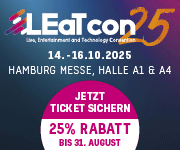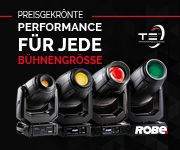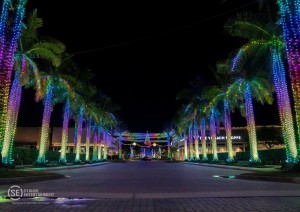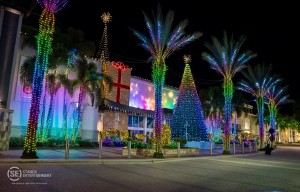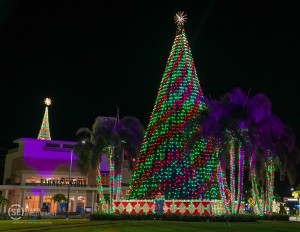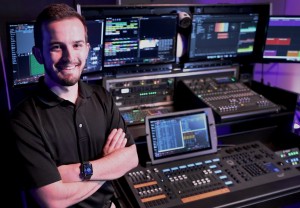Aktuelle News & Schlagzeilen
Christmas light show at Florida shopping mall under Obsidian control
The Mall at University Town Center in Sarasota, Florida, offers over 100 stores and 20 dining options. This past holiday season, the mall retired its smaller Christmas experience from years past and debuted a new holiday light show.
Justin Stancil (pictured) of Stancil Entertainment was contacted to design the lighting and turned to the Onyx platform from Obsidian Control Systems to control the massive system. “The client called saying they had a vision to do a big light show but had no idea how to achieve it”, Stancil shares. “I got the call in August and we designed a complete system - advanced pixels, intelligent lighting, control, hardlined and wireless networking, and automation.”
The lighting canvas, spread across an area a quarter of a mile square, included 200 palm trees covered in 1000 pixels each, a 50-ft Christmas tree with 800 pixels, and a 34-ft tree also covered in pixels. Four Elation Proteus Hybrid luminaires washed the main Christmas tree in color, along with other wash fixtures, and fireworks were added on some finale shows. Stancil put together four different shows, all about 10 minutes long, which ran every half hour between 6:30-9:30 pm, seven shows a night. The official launch of the new son et lumiere took place on November 19th and shows ran nightly through January 3rd.
Lighting was controlled via a setup that included an Onyx PC and NX4 lighting console embedded with Obsidian’s Dylos pixel composer. Twelve Netron EN4 and two Netron EN12 nodes, also from Obsidian, were used for data distribution. Stancil worked with Russ Brown at Freed Sales out of Orlando to secure the Obsidian equipment for Benderson Development, the development company behind the mall.
Stancil ran a custom version of Onyx with 255 unlocked Universes. The show, which used a total of 215 Universes, included a combination of effects from the Onyx console’s built-in Dylos pixel composer, as well as its regular effects engine. “We patched every pixel in the show individually”, says the designer, who did not want to treat the pixels as a giant video screen using a traditional media server because of the limitations in working with video files. “If you want to do very precise, per pixel effects it is difficult”, he says. “It is much more time consuming to render video files for all effects in your show.”
The Mall purchased about 250,000 pixels in total for the installation, all in 50 or 100 node configurations. Using a star network configuration, IDF boxes on every major rooftop contained a Ubiquiti UniFi Layer 3 switch for the pixels and pixel controllers, a mini battery backup and a Netron EN4 node, meaning they had four Universes to add more lighting from each box location. All IDF’s on rooftops adjacent to show control were wired with TAC fiber, but all other locations that were too far and did not have underground conduit were fed via wireless network antennas. Audio and sACN data was sent to the pixel controllers and sACN data to the Netron EN4 and EN12 nodes with no latency.
The lighting install was so massive it could only be seen in its entirety from above so Stancil took drone footage and had fifteen cameras set up around the installation, also to make sure that everything ran correctly. The light shows were viewable both from a car or on foot.
(Photos: Stancil Entertainment/Jorge Finol)
SCHLAGZEILEN
news archiv
suche
© 1999 - 2025 Entertainment Technology Press Limited News Stories



